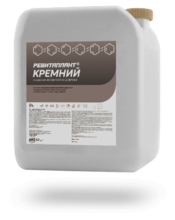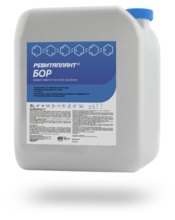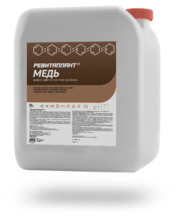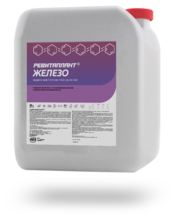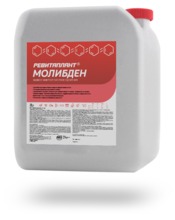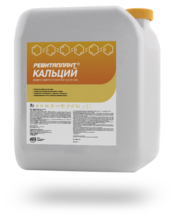Ingredients
Active ingredient content by molecular weight, g/l
Goals / Purpose
| Crop | Input rate | Input stage | Remarks | |
|---|---|---|---|---|
| Crop: | Input rate: 0,5–1 l/ha | Input stage: Booting | Remarks: Remedy of nutrient deficiency, chlorophyll synthesis, boosting frost resistance, quality improvement, higher yield and better stress-resistance | Details |
| Crop: | Input rate: 0,5–1 l/ha | Input stage: Earing | Remarks: Remedy of nutrient deficiency, chlorophyll synthesis, boosting frost resistance, quality improvement, higher yield and better stress-resistance | Details |
| Crop: | Input rate: 0,5–1 l/ha | Input stage: 1st tier leaves | Remarks: Remedy of nutrient deficiency, chlorophyll synthesis, boosting frost resistance, quality improvement, higher yield and better stress-resistance | Details |
| Crop: | Input rate: 0,5–1 l/ha | Input stage: Budding | Remarks: Remedy of nutrient deficiency, chlorophyll synthesis, boosting frost resistance, quality improvement, higher yield and better stress-resistance | Details |
| Crop: | Input rate: 0,5–1 l/ha | Input stage: 2-4 leaf pairs | Remarks: Remedy of nutrient deficiency, chlorophyll synthesis, boosting frost resistance, quality improvement, higher yield and better stress-resistance | Details |
| Crop: | Input rate: 0,5–1 l/ha | Input stage: 6-8 leaf pairs | Remarks: Remedy of nutrient deficiency, chlorophyll synthesis, boosting frost resistance, quality improvement, higher yield and better stress-resistance | Details |
| Crop: | Input rate: 0,5–1 l/ha | Input stage: Ramification | Remarks: Remedy of nutrient deficiency, chlorophyll synthesis, boosting frost resistance, quality improvement, higher yield and better stress-resistance | Details |
| Crop: | Input rate: 0,5–1 l/ha | Input stage: 6-7 leaves | Remarks: Remedy of nutrient deficiency, chlorophyll synthesis, boosting frost resistance, quality improvement, higher yield and better stress-resistance | Details |
| Crop: | Input rate: 0,5–1 l/ha | Input stage: Tasseling | Remarks: Remedy of nutrient deficiency, chlorophyll synthesis, boosting frost resistance, quality improvement, higher yield and better stress-resistance | Details |
| Crop: | Input rate: 0,5–1 l/ha | Input stage: In autumn for winter-sown rapeseed at the phase of 5–6 leaves | Remarks: Remedy of nutrient deficiency, chlorophyll synthesis, boosting frost resistance, quality improvement, higher yield and better stress-resistance | Details |
| Crop: | Input rate: 0,5–1 l/ha | Input stage: Budding | Remarks: Remedy of nutrient deficiency, chlorophyll synthesis, boosting frost resistance, quality improvement, higher yield and better stress-resistance | Details |
| Crop: | Input rate: 0,5–1 l/ha | Input stage: Budding | Remarks: Remedy of nutrient deficiency, chlorophyll synthesis, boosting frost resistance, quality improvement, higher yield and better stress-resistance | Details |
| Crop: | Input rate: 0,5–1 l/ha | Input stage: Two weeks after the first application | Remarks: Remedy of nutrient deficiency, chlorophyll synthesis, boosting frost resistance, quality improvement, higher yield and better stress-resistance | Details |
| Crop: | Input rate: 0,5–1 l/ha | Input stage: Before flowering | Remarks: Remedy of nutrient deficiency, chlorophyll synthesis, boosting frost resistance, quality improvement, higher yield and better stress-resistance | Details |
| Crop: | Input rate: 0,5–1 l/ha | Input stage: After flowering | Remarks: Remedy of nutrient deficiency, chlorophyll synthesis, boosting frost resistance, quality improvement, higher yield and better stress-resistance | Details |
| Crop: | Input rate: 0,5–1 l/ha | Input stage: Fruit setting | Remarks: Remedy of nutrient deficiency, chlorophyll synthesis, boosting frost resistance, quality improvement, higher yield and better stress-resistance | Details |
| Crop: | Input rate: 0,5–1 l/ha | Input stage: Budding | Remarks: Remedy of nutrient deficiency, chlorophyll synthesis, boosting frost resistance, quality improvement, higher yield and better stress-resistance | Details |
| Crop: | Input rate: 0,5–1 l/ha | Input stage: Two weeks after the first application | Remarks: Remedy of nutrient deficiency, chlorophyll synthesis, boosting frost resistance, quality improvement, higher yield and better stress-resistance | Details |
| Crop: | Input rate: 0,5–1 l/ha | Input stage: 4-6 leaf pairs | Remarks: Remedy of nutrient deficiency, chlorophyll synthesis, boosting frost resistance, quality improvement, higher yield and better stress-resistance | Details |
| Crop: | Input rate: 0,5–1 l/ha | Input stage: 8-10 leaf pairs | Remarks: Remedy of nutrient deficiency, chlorophyll synthesis, boosting frost resistance, quality improvement, higher yield and better stress-resistance | Details |
| Crop: | Input rate: 0,5–1 l/ha | Input stage: 50% crop closing | Remarks: Remedy of nutrient deficiency, chlorophyll synthesis, boosting frost resistance, quality improvement, higher yield and better stress-resistance | Details |
Description
Manganese plays an important role in redox reactions in a plant; it is part of the enzymes which make those processes occur. Manganese is involved in photosynthesis, respiration, in carbohydrate and protein metabolism. It accelerates the outflow of carbohydrates from leaves to the root. In addition, manganese is involved in the synthesis of vitamin C and other vitamins; it increases the sugar content in sugar beet tubers, and the content of proteins in cereals.
With the lack of this element, the development of the root system and plant growth slows down, and productivity decreases.


